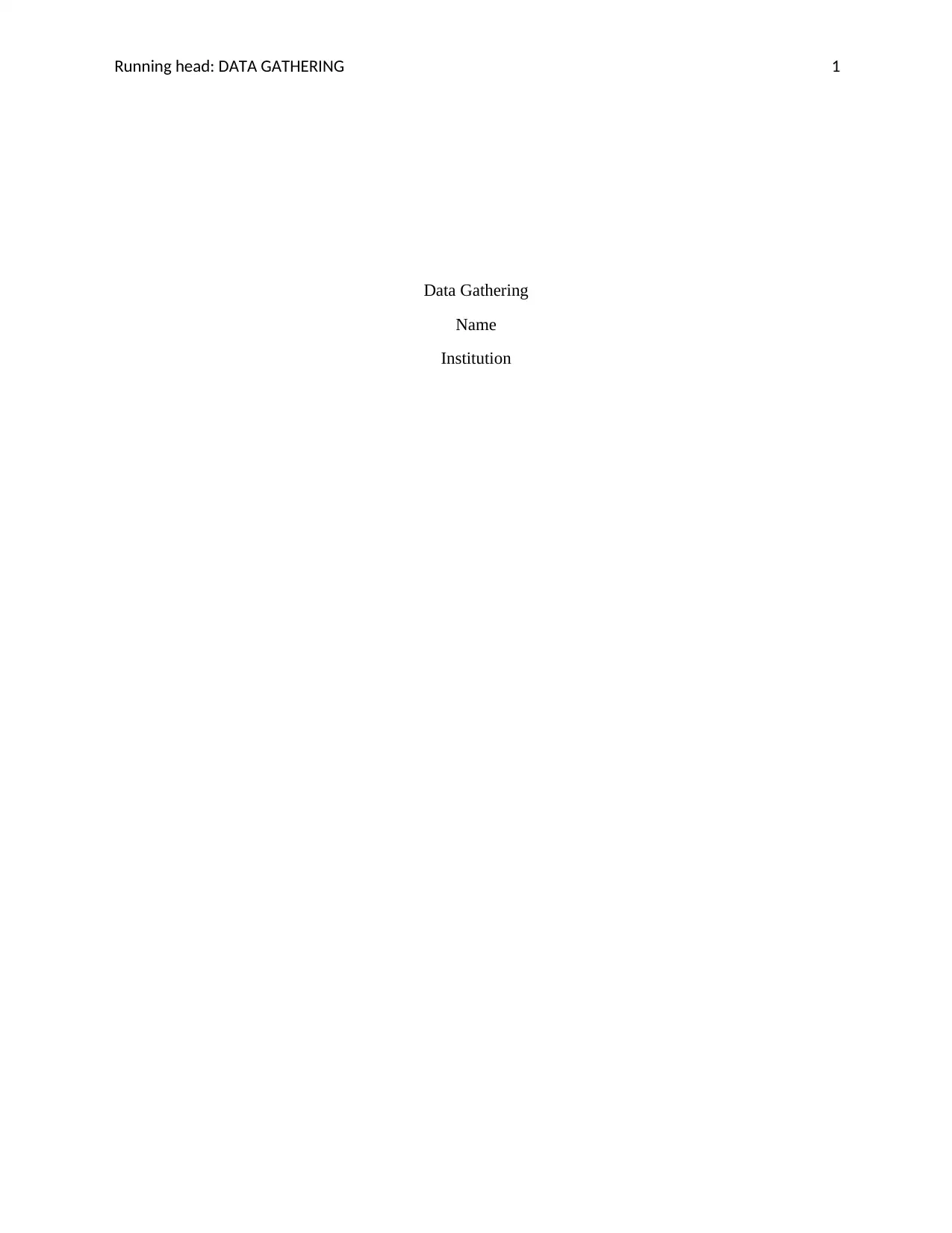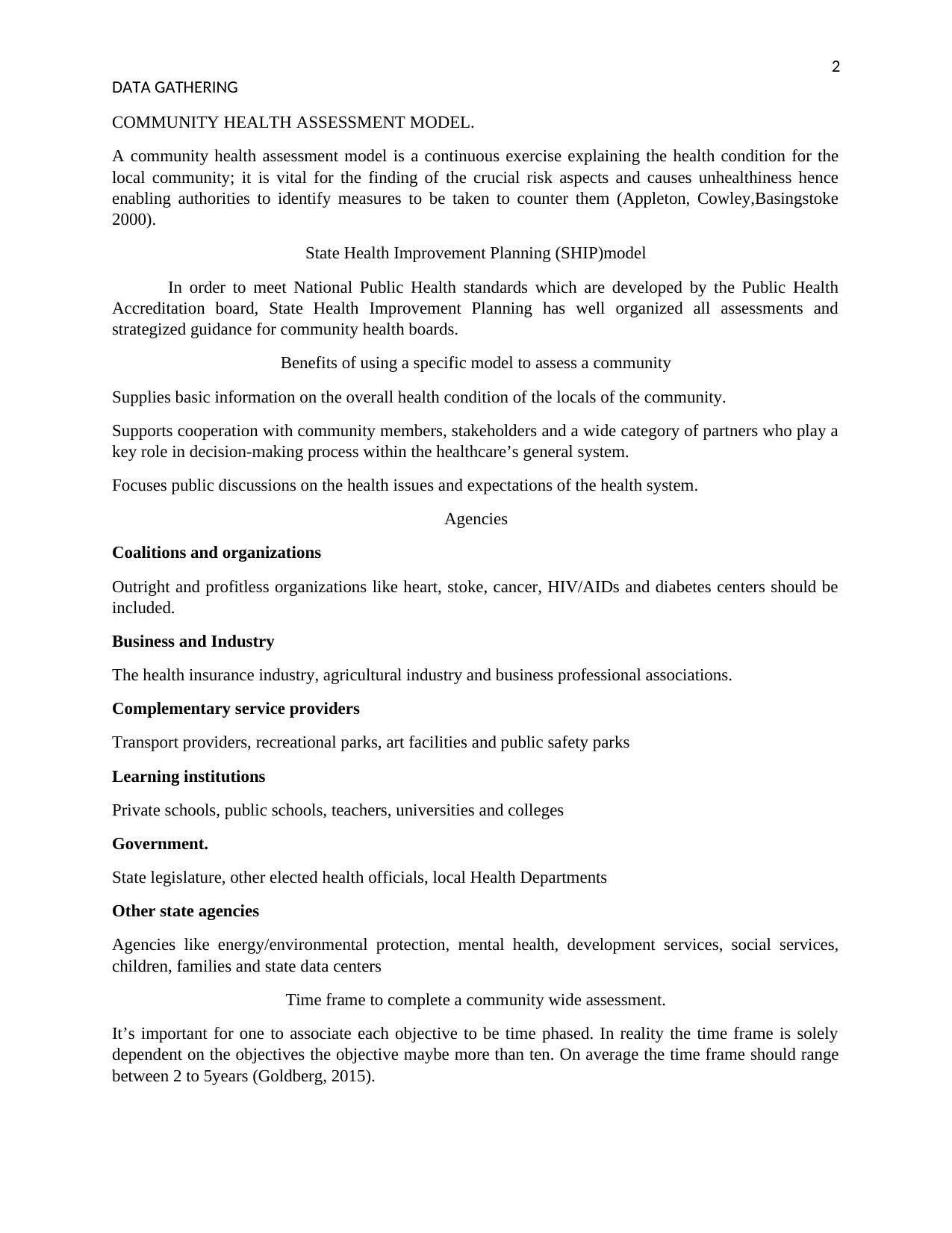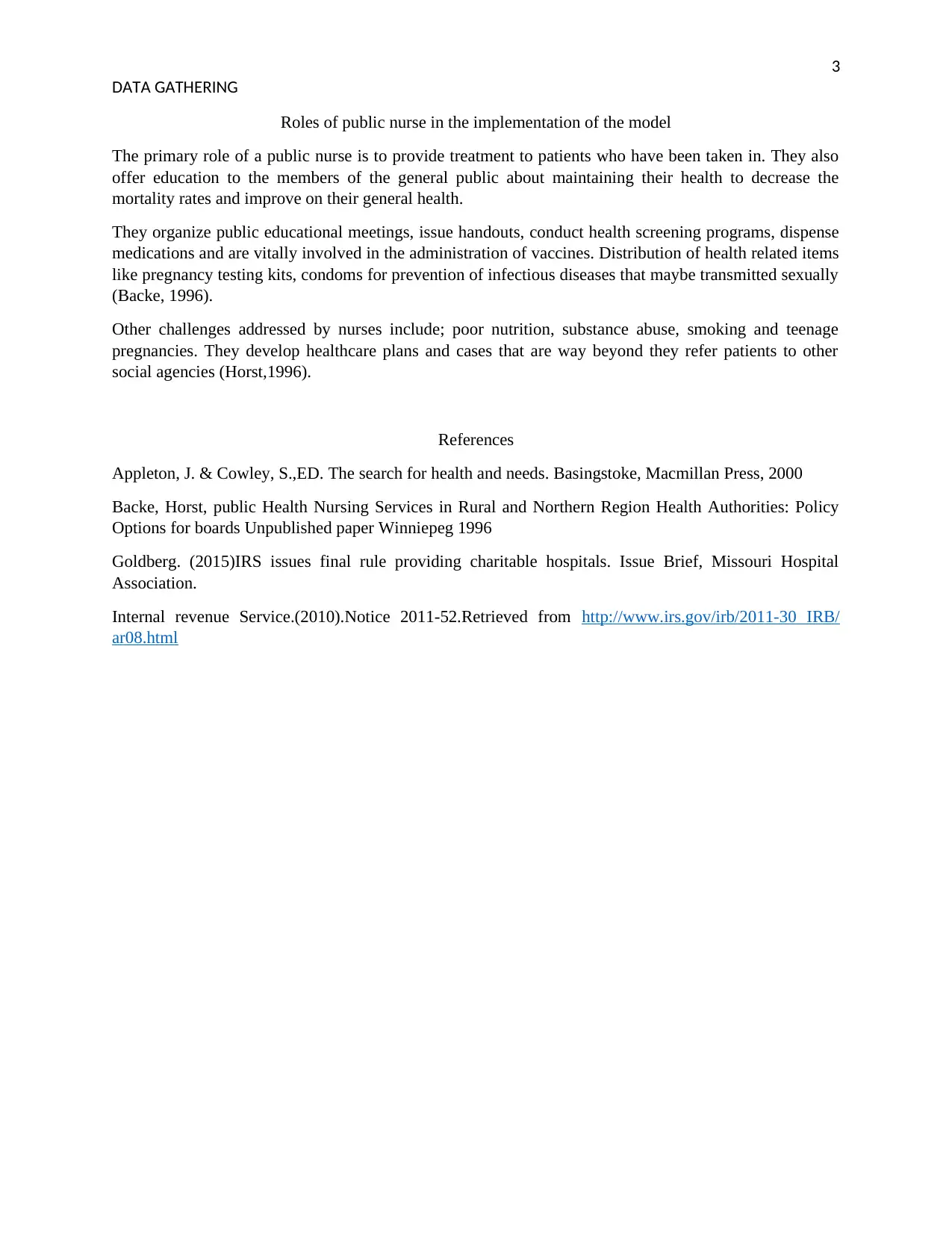Community Health Assessment Model: Data Gathering Report
VerifiedAdded on 2022/08/26
|3
|575
|20
Report
AI Summary
This report focuses on data gathering within the context of community health assessments. It introduces the Community Health Assessment Model and the State Health Improvement Planning (SHIP) model, highlighting their benefits, including providing information on community health and fostering collaboration among stakeholders. The report outlines the time frame for assessments and discusses the roles of public nurses in implementing the model, such as providing patient treatment, public education, and health screenings. It references various resources for demographic data and government agencies like Healthy People 2020 and the CDC. The report also touches upon challenges addressed by nurses, including poor nutrition and substance abuse, and their role in developing healthcare plans and referrals. Overall, the document provides a comprehensive overview of the process and importance of data gathering in community health initiatives.
1 out of 3





![[object Object]](/_next/static/media/star-bottom.7253800d.svg)